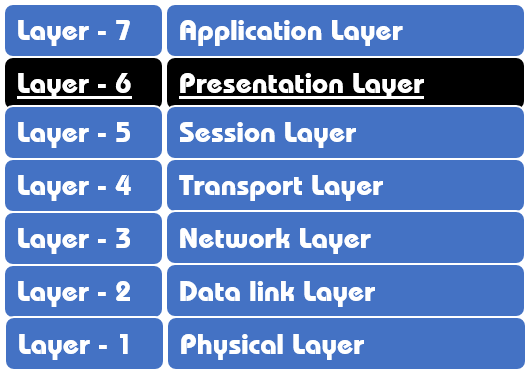Introduction
The presentation layer is the layer 6 of the OSI reference model. It is responsible for defining how information is transmitted and presented to the user interface.
Presentation layer defines how various forms of text, graphics, audio and video information is transmitted and used correctly by the application layer. It is also known as translation layer as it serves as a data translator for the network. The presentation layers provides independence from differences in data representation by transmitting from application to network format and vice versa.
The best example of applications with clear of this layer function is a web browser. The presentation layer can also provide encryption to secure data from the application layer. The presentation layer acts as a translator between the application and the network, mainly addressing the syntax representation of user information. See the image below.

Function of presentation layer
- It formats and encrypts data to be sent across the network.
- It takes care of data that is sent in such a way which the receiver will understand the information.
- This layer carries out the encryption at the transmitter and decryption at the receiver.
- This layer deals with the issue of string representation.
- It deals with syntax and semantic of the messages.
- The presentation layer also provides privacy and network security by using end to end encryption.
- It protects the data from being read by unauthorized persons.
- It provides an establishment and release of the presentation connection.
- The presentation layer provides services dealing with the complex data structures.
Presentation layer protocols
- Apple Filing Protocol (AFP)
- Lightweight Presentation Protocol (LPP)
- NetWare Core Protocol (NCP)
- External Data Representation (XDR)
- Secure Socket Layer (SSL)
- Telnet (a remote terminal access protocol)
- 25 Packet Assembler/Disassembler Protocol (PAD)


